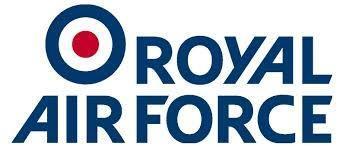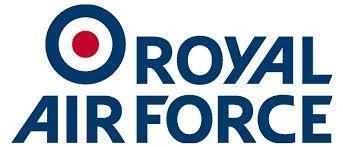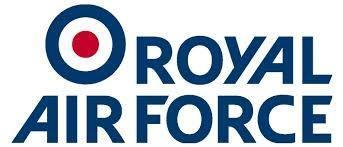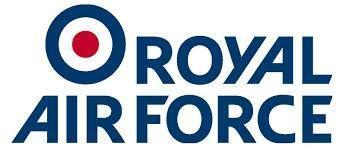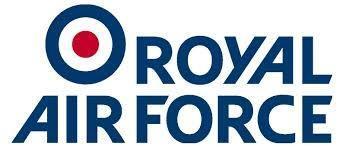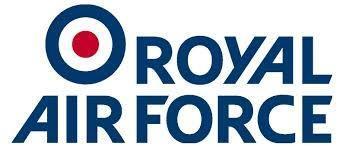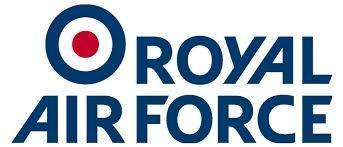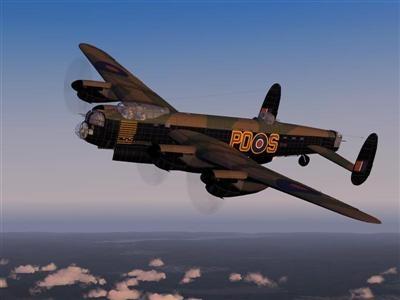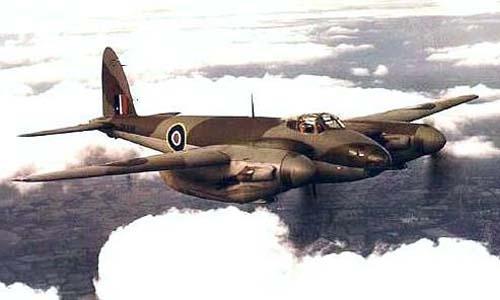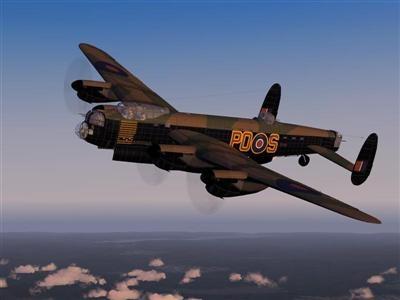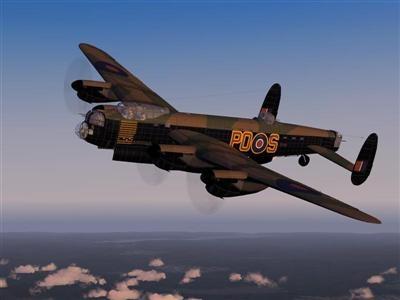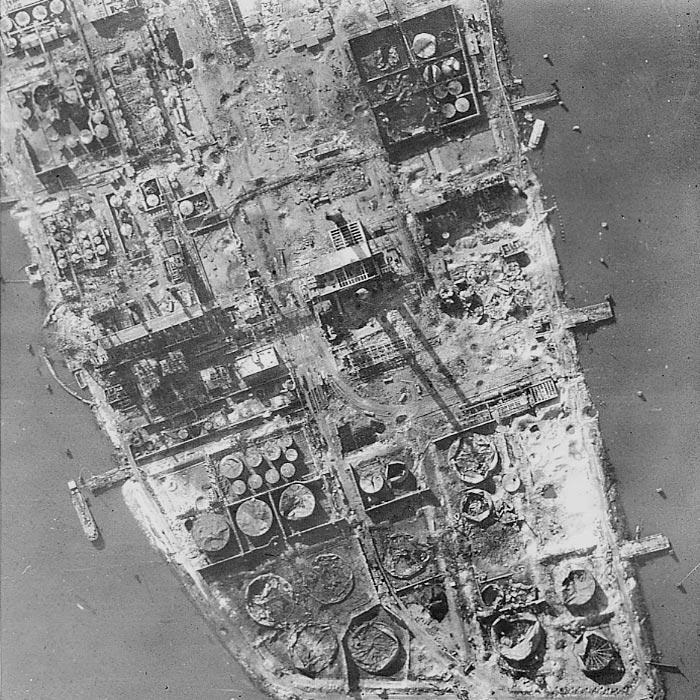
No. 5 Group
Motto: "Undaunted".
Badge: A lion rampant. The badge is symbolic of the qualities of a lion.
Authority: King George VI, March 1945.
A Bomber Group whose wartime activities have, perhaps, been more widely publicised than those of any of its rivals, was No. 5 Group, which was based both in and close to Lincolnshire. This Group not only contributed to the heavy bombing offensive, but was responsible for many of the most dramatic and specialised attacks of the war. These included the successive breachings of the Dortmund-Ems Canal; the destruction of the Möhne and Eder Dams and the great Kembs Dam on the upper Rhine; the sinking of the Tirpitz and Lützow; and the shuttle bombing of Friedrichshafen and Spezia whilst flying between bases in England and North Africa.
No. 5 (Bomber) Group was formed almost exactly two years before the outbreak of the Second World War - on 1st September 1937. It began as an offshoot of No. 3 (Bomber) Group, with headquarters at Mildenhall and with three stations and seven squadrons: Grantham, Nos. 113 and 211 Squadrons; Waddington, Nos. 44, 50 and 110 Squadrons; and Hemswell, Nos. 61 and 144 Squadrons.
September 1939, found No. 5 Group with headquarters at Grantham (in a house known as "St. Vincents"), five stations (Scampton, Waddington, Hemswell, Finningley and Cottesmore) and ten squadrons all equipped with Hampdens.
On 11th September 1939, Air Vice-Marshal AT Harris assumed command of No. 5 Group. The future AOCinC Bomber Command stayed with the Group for 14 months.
The Group continued to fly only Hampden aircraft until the winter of 1940/41 when it began to convert to Manchesters. In the meantime it had pioneered, and become a master in, the art of minelaying and had indeed been responsible for all minelaying from the air. It had, during this time, also taken part in tactical and strategic bombing operations and had won two Victoria Crosses: the first was awarded to Flight Lieutenant RAB Learoyd for his daring attack on an aqueduct of the DortmundEms Canal, and the second to Sergeant John Hannah, who fought a fire in his aircraft on the return journey from a bombing mission.
The Manchester had many teething troubles even after it had reached the operational stage. It so often happened that these aircraft were grounded for considerable periods in order that modifications might be effected, and it was because of this that No. 97 Squadron - one of the first to be equipped with Manchesters - became known as the "97th Foot".
In March and April 1941, the Group played its part in the daring daylight attacks on the Scharnhorst and Gneisenau at Brest - then the most heavily defended target of all. On the night of 12/13th October 1941, the Group despatched 118 aircraft to attack Hüls and Bremen or diversionary objectives (searchlights) in what was its biggest effort up to then. In December aircraft from one of its squadrons (No. 50) laid the smoke screens for the Commando raid on Vaagsö and Maaloy.
Early in 1942 a four-engined development of the Manchester became an increasingly common sight over Lincolnshire - this was the Lancaster, which proved to be the RAF's best heavy bomber of the war. The first operation undertaken by Lancasters was a minelaying operation in the Heligoland Bight on 3rd/4th March 1942, and it was on 17th April that the daring daylight raid on Augsburg took place, led by Squadron Leader Nettleton, of Waddington (who also took part in the previously-mentioned mine-laying op). Twelve aircraft from Nos. 44 and 97 Squadrons flew out at tree-top height to attack the MAN Diesel engine factory. Five of the twelve returned and Nettleton was the only one left in his original flight of six. Nettleton received the Victoria Cross. In May 1942 the first of the 1,000-bomber raids took place. The target was Cologne and No. 5 Group contributed 162 aircraft and 286 tons of bombs. For his part in the attack, Flying Officer LT Manser, a pilot stationed at Swinderby, was awarded a posthumous VC.
During the eight days from 17th to 24th October, No. 5 Group made three of the most memorable raids in the history of Bomber Command. On the 17th, 86 Lancasters, without fighter escort, flew deep into central France to deliver attacks on the great Schneider armaments works at Le Creusot (bombed by 81 aircraft) and the associated switching and transformer station at nearby Montchanin (bombed by 5 aircraft). On the night of the 22nd/23rd, in preparation for the celebration of the Fascist march on Rome, about 85 Lancasters of the Group, led by aircraft of the Pathfinder Force, flew to Genoa and delivered what was perhaps the most highly-concentrated attack yet made - and without losing a single aircraft. On the 24th, 74 Lancasters, many of them carrying 4,000lb bombs, delivered a daring assault on Milan in daylight, causing tremendous havoc.
It was soon after midnight on 17th May, that No. 617 Squadron from Scampton, led by Wing Commander Guy Gibson, breached the Möhne and Eder Dams. Power stations were put out of action and many roads, railways and bridges swept in to the Ruhr and Eder valleys. Sixteen Lancasters were involved in the Dams raid (two other dams were also attacked but not breached); half of the force returned. Gibson was awarded the Victoria Cross. All through the winter, from November 1943, to the spring of the following year, the Battle of Berlin was fought and in this the Group played a full part.
In April 1944, priority was given to enemy communications targets in North-East Europe. All Service leave was stopped; "softening-up" for invasion had begun. The bombing of targets in France and Belgium naturally called for a high standard of accuracy. This was greatly aided by a new system of target- marking which was largely evolved by Wing Commander Cheshire, who had succeeded Wing Commander Gibson in command of the "Dam Busters", who had by now moved from Scampton to Woodhall Spa. Cheshire was subsequently awarded the Victoria Cross.
D-Day was in June and No. 5 Group flew more than 3,000 sorties for the first time in its history. It was in this month that aircraft from Woodhall Spa dropped the first 12,000lb Tallboy bombs and blocked the Saumur Tunnel through which all direct rail communications from the south of France to the Normandy front had to pass. In August, aircraft from Woodhall Spa, Bardney and Metheringham attacked the U-boat bases at La Pallice, Lorient and Brest. At Brest the uncompleted hull of the battleship Clemenceau and the cruiser Gueydon were sunk. As a result of two daring low-level mining operations against the ship canals at Stetting and Königsberg all Swedish shipping was withdrawn from the Baltic trade. The Tirpitz was sunk in Tromsö fjord on 12th November by aircraft from Woodhall Spa and Bardney, which made a round trip of more than 2,000 miles from an advanced base in Scotland.
An outstanding achievement in March was the unaided bombing by No. 5 Group of Wesel immediately before the crossing of the Rhine, north and south of the town, by Field Marshal Montgomery's 21st Army Group. Commandos captured the town that night with only 36 casualties. Montgomery said, "The bombing of Wesel last night was a masterpiece and was a decisive factor in making possible our entry into the town before midnight."
Before this, on 14th March, an aircraft from Woodhall had dropped the first 22,000lb Grand Slam bomb "in anger" and had helped destroy the viaduct at Bielefeld. In all, seven bridges or viaducts were put out of action in ten days by No. 5 Group alone.
WWII Headquarters:
- "St. Vincents", Grantham : Oct 1937-Nov 1943
- Morton Hall, Swinderby : Nov 1943 onwards
WWII Air Officers Commanding:
- Air Commodore WB Calloway : 17th Aug 1937
- Air Vice-Marshal AT Harris : 11th Sep 1939
- Air Vice-Marshal NR Bottomley : 22nd Nov 1940
- Air Vice-Marshal JC Slessor : 12th May 1941
- Air Vice-Marshal WA Coryton : 25th Apr 1942
- Air Vice-Marshal the Hon. RA Cochrane : 28th Feb 1943
- Air Vice-Marshal HA Constantine : 16th Jan 1945


